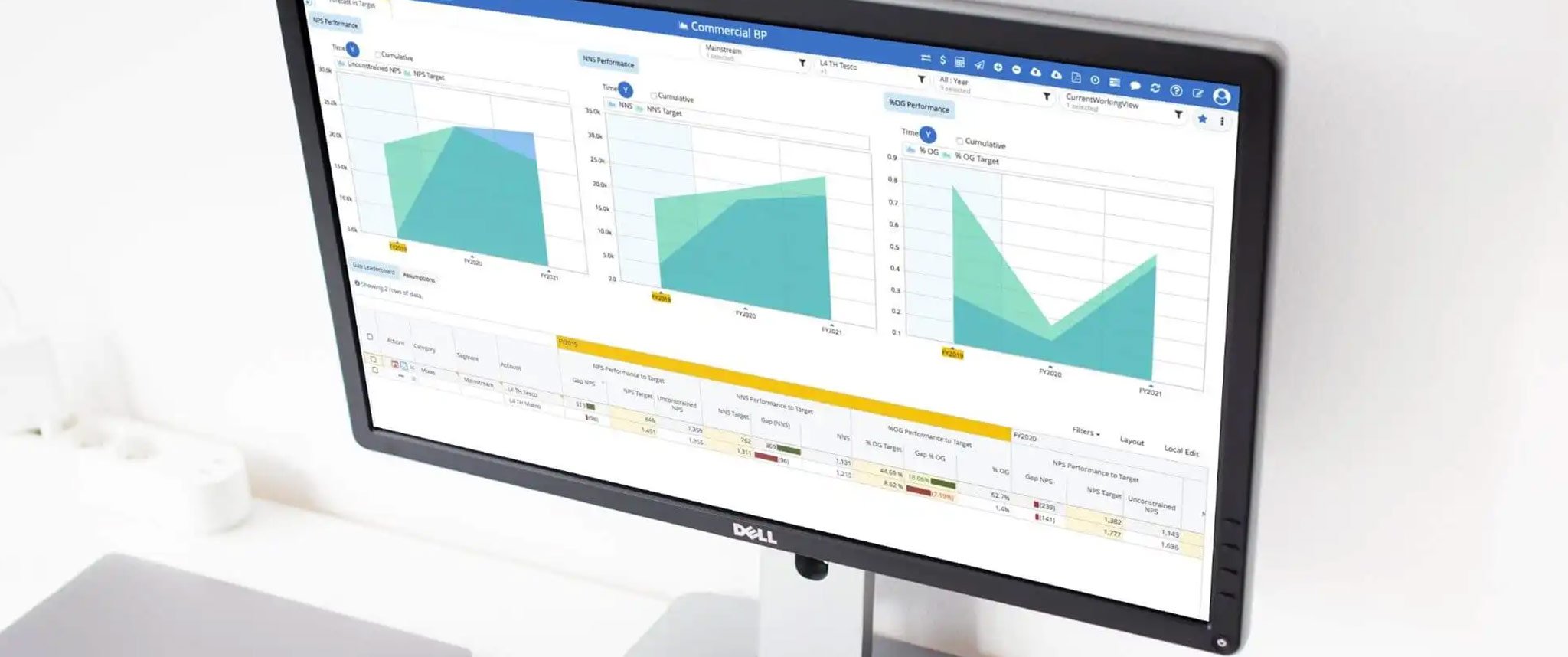The quest for the demand management Holy Grail
For a long time, global conglomerates leaders and corporate innovators have their interests lie in finding the ultimate demand planning system capable of unleashing demand planning’s true potential. They found legacy systems. Yet, these systems failed to capitalize this opportunity and, inversely, succumb to the breakneck development pace of the demand forecasting process.
Nowadays, they have found a new hope. The answer lies in the next-generation AI-powered planning platform, with the capability to leverage demand planning process. Once applied, it can scale significant bottom-line returns by improving forecasts and visibility. This advancement significantly retracts obstinate hassles in Demand Forecasting, making it more agile and efficient.
But, not every next-gen system is a surefire guarantee for success. Here are the eight critical requirements that one must meet if they are to be considered the true next-gen demand planning system.
What does an effective demand management software provide?
A sound demand planning tool is one that is not only catered to by the supply chain department’s planners. Instead, it should be a result of interdepartmental collaboration. The supply chain, along with sales, Marketing, Finance, and others, must work together in a transparent landscape to make the most out of the process.
Besides, for sales to thrive, forecasting needs to reflect up-to-date market intelligence and sales activity. The next-gen demand management platform must therefore provide flexibility, real-time visibility, and ease of use, which the following capabilities can unlock:
- Modeling flexibility to handle different channel, customer, and product variations:
A global manufacturing company possesses an extensive product portfolio (subject to myriads of impactful demand drivers like lifecycle dates, seasonality, pricing, and promotions) across multiple channels (retail, distributors, direct sales, and online). If demand management processes are to roll out on an integrated system instead of basing on offline spreadsheets like its legacy predecessors. In that case, the system must be versatile enough to take these variations into account for the business model, not to forget granting further access and control to end-users.
- Real-time visibility to risks and opportunities:
To boost sales, sales teams need better visibility to new product initiatives, marketing, promotion initiatives, supply status, and intelligence about customers and competitors. They must know what has changed and what hasn’t, as these variations have tremendous impacts on their planning’s accuracy and efficiency. In today’s landscapes, sales representatives have to chase people across the organization and collect multiple spreadsheets to get this visibility before meeting customers. This is also the same visibility that is required to create a better forecast as well. If a new product launch date slips or a marketing initiative falls back, the forecast update must go on instantly. Next-generation systems must make such visibility available at the sales teams’ fingertips in time to help them sell and forecast better.
- Ready-at-hand sales insights:
The system needs to provide insights to sales so they can elicit better negotiation with customers and win better deals. The 21st-century sales team needs in-depth information on products, pricing, marketing, and promotion initiatives readily accessible to make their cases. They need to be able to capture all customer feedback in real-time. That customer feedback is a critical input into the sales forecast.
- Make forecasting easy with 3A’s—alerts, analytics, and assumptions:
The system must notify the salesperson and their planning support group with automatic, smart notifications on everything that has changed from the latest cycle. The heads-ups enable appropriate and responsive adjustments to the forecasts. Further, where feasible, the system must use AI-powered analytics to create a baseline forecast as a starting point for the sales team to review. AI-powered solutions can also provide strong “forecast assumptions” capture capabilities that help the sales team explain why the rationales for why forecasts have changed. Visibility into assumptions helps reduce—even eliminate—second-guessing of predictions by other functions.
- Initiatives planning, collaboration, and execution:
To boost sales and close gaps between forecasts and plans, sales organizations drive various sales and promotions initiatives with customers. If the specific risk or opportunity requires support from other parts of the organization (product, marketing, supply chain), sales needs to leap across functional boundaries, engage in collaboration, bring forth ideas, and create initiatives. The planning system must empower sales to rapidly float ideas, collaborate, develop, plan, and execute the right initiatives with the appropriate budgets and resources.
Also read: Business Intelligence Impact On The Strategic Decision-Making Process
- Rapid Demand/Supply scenario planning:
Either when demand soars or plummets, demand planners and sales teams need fingertip visibility into the available supply to evaluate the impact. Furthermore, if committed supply is not sufficient, the teams should be able to collaborate—salespeople and supply chain planners. The collaboration allows the planners to rapidly evaluate constraints and costs to handle the demand fluctuation and guide sales on treating the demand (either prioritize or renegotiate agreements).
- Performance Post-Game Analytics:
The system should make it easy for sales management to evaluate and compare between forecasts, original plans, and actual performances to assess the individuals and teams’ responses to risks and opportunities. This will help drive accountability and continuous improvement in the sales organization and help create a healthy competition culture based on relative leaderboards and benchmarks.
- Ease of Use:
Not only planners, but managers and frontline representatives must also be the users of the demand management platform. With different roles also come different usability requirements. Planners love the familiarity and ease of use of Excel for number crunching. So the system should empower them with Excel front ends. Simultaneously, the system must ensure the Excel user interfaces are connected to the backend system that drives data integrity and collaboration. Managers need to review reports on performance vs. plan, conduct meetings, and collaborate with other departments on gaps and initiatives to close the gaps. For salespeople and front line roles, the aim is to get insights and provide inputs on their mobile devices. Such usability will drive up the adoption of the process and unlock the value.
Elevating the Demand Management/ S&OP process while leveraging existing planning infrastructure
With the above AI-powered Integrated Demand Management capabilities that drive sales adoption, companies can now align sales, product, supply chain, and finance organizations to drive significant bottom-line value. A typical manufacturing organization can achieve anywhere from $10-30 million of incremental operating profit for every billion in revenue from top-line and margin enhancements.
So, the final question arises, whose solutions are capable of fulfilling these requirements? This is a question that a Next-Gen Demand Planning Tool can answer.





